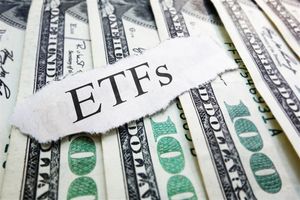
October 29, 2025 – Despite a series of recent interest rate cuts by the Federal Reserve, the housing market finds itself in a peculiar holding pattern, with mortgage rates showing little sign of significant downward movement. Financial experts and economists largely agree that the Fed's easing actions, including the latest quarter-point reduction today, October 29, 2025, were already anticipated and "priced in" by the market. Compounding this effect is a pervasive "data fog" stemming from an ongoing government shutdown, which began on October 1, 2025, leaving policymakers and investors "flying blind" in their assessment of the economy.
This convergence of factors paints a picture of sticky mortgage rates, projected to hover stubbornly between 6% and 6.5% well into 2026. While a gradual decline is anticipated over the long term, the dream of a swift return to pre-pandemic lows appears increasingly distant, posing continued challenges for prospective homebuyers and the broader real estate sector.
The Fed's Easing Cycle Meets Market Realities and a Data Blackout
The Federal Reserve has been on an easing trajectory, initiating its current cycle with a 50-basis-point cut on September 18, 2024, followed by additional reductions in early November and December 2024. This year, the Fed delivered a quarter-point cut in September 2025, bringing the federal funds rate to a range of 4.00% to 4.25%, and another today, October 29, 2025, lowering it further to 3.75% to 4%. These moves were intended to stimulate economic activity, yet their impact on long-term mortgage rates has been muted.
Economists, including Realtor.com's Chief Economist Danielle Hale, have consistently articulated that the market is highly efficient in anticipating the Fed's actions. This means that by the time a rate cut is officially announced, the financial markets, including those that influence mortgage rates, have often already adjusted. Mortgage rates, which are more closely tied to the 10-year Treasury yield and broader inflation expectations rather than directly to the federal funds rate, had already seen a modest decline in the weeks preceding the October meeting, reflecting this forward-looking market behavior.
Adding a layer of profound uncertainty is the ongoing federal government shutdown, now in its fourth week, having commenced on October 1, 2025. This shutdown has plunged the economy into a "data fog," with critical reports such as the monthly jobs figures and other inflation metrics being withheld. Federal Reserve Chair Jerome Powell himself acknowledged the precarious situation, stating that officials are "flying blind" and analogizing the situation to "driving in the fog, you slow down." This lack of reliable economic indicators makes it exceedingly difficult for both the Fed to formulate precise monetary policy and for investors to gauge economic health, contributing to market volatility and disincentivizing significant shifts in long-term rates.
Public Companies Brace for Persistent Rate Environment
The sustained high-interest rate environment, exacerbated by the current market dynamics, presents a mixed bag for public companies across the financial and real estate sectors. Mortgage originators and lenders, such as Rocket Mortgage (NYSE: RKT) and UWM Holdings Corporation (NYSE: UWMC), may face continued headwinds. A lack of significant rate drops typically translates to reduced refinancing activity, which often constitutes a substantial portion of their business. While purchase mortgages will still occur, affordability challenges could dampen overall origination volumes, impacting their revenue and profitability.
Real estate technology companies like Zillow (NASDAQ: Z) and Redfin (NASDAQ: RDFN), which thrive on transaction volumes and a robust housing market, could also experience slower growth. If high mortgage rates continue to price out potential buyers, housing inventory might accumulate, and transaction speeds could slow, affecting their advertising and commission-based revenues. Similarly, homebuilders such as D.R. Horton (NYSE: DHI) and Lennar (NYSE: LEN) might find demand for new constructions constrained. While they often have strategies to mitigate interest rate impacts, prolonged elevated rates can limit buyer pools and necessitate incentives, potentially squeezing profit margins.
Conversely, financial institutions with large, established mortgage portfolios might see some stability, as their existing assets yield consistent returns in a higher-rate environment. Companies less directly exposed to interest rate sensitivity, or those serving cash-rich buyers, may find themselves relatively insulated from these market pressures. The overall market sentiment, however, points to caution for companies heavily reliant on an active and affordable housing market.
Wider Implications: Housing Affordability and Economic Uncertainty
The current mortgage rate scenario fits into a broader trend of housing affordability challenges that have gripped the nation for several years. Even as the Federal Reserve attempts to ease financial conditions, the persistent stickiness of long-term rates means that the barrier to homeownership remains high for many. This has ripple effects on consumer spending, as a significant portion of household income is diverted to housing costs, leaving less for other goods and services, potentially slowing overall economic growth.
The "data fog" from the government shutdown introduces a layer of systemic risk. Without accurate and timely economic data, the Federal Reserve's ability to make informed policy decisions is compromised. This could lead to policy missteps or, at best, a prolonged period of cautious, reactive measures. Historically, periods of significant economic data blackouts have been associated with increased market volatility and investor apprehension. While a shutdown can sometimes initially push investors towards the safety of Treasury bonds, potentially lowering yields, an extended blackout creates an environment where market expectations can easily diverge from underlying economic realities. The fact that the 10-year Treasury yield can sometimes surge even after a Fed rate cut underscores the complex interplay of market forces, where inflation expectations and global economic outlooks often outweigh short-term Fed actions.
What Comes Next: Awaiting Clarity and Strategic Adaptation
In the short term, the outlook suggests that mortgage rates will remain stubbornly high, likely staying within the 6% to 6.5% range. A resolution to the government shutdown is paramount, as the return of reliable economic data will be crucial for both the Federal Reserve and financial markets to gain clarity. Until then, the "data fog" will likely continue to foster uncertainty, preventing any significant downward shifts in rates.
Looking further ahead into 2026, economists anticipate a gradual decline in mortgage rates, but not a dramatic fall to the sub-4% or 5% levels seen in earlier periods. This suggests that the housing market will need to adapt to a "new normal" of higher borrowing costs. For consumers, this may mean adjusting expectations regarding home size, location, or the timing of purchases. For companies, strategic pivots may be necessary, focusing on efficiency, catering to specific market segments, or exploring innovative financing solutions to attract buyers. Market opportunities may emerge for companies that can provide affordable housing alternatives or those that can assist homeowners in improving their existing properties rather than moving.
Wrap-Up: Navigating a Complex and Uncertain Market
The current financial landscape is defined by a confluence of factors: Federal Reserve rate cuts that were largely anticipated, and an economic environment obscured by a government-induced "data fog." The net effect is a persistent stickiness in mortgage rates, defying expectations for significant declines and maintaining pressure on housing affordability.
Moving forward, the market will remain volatile and uncertain. Investors should closely monitor developments regarding the government shutdown and the subsequent release of economic data. The Federal Reserve's future communications, particularly regarding inflation and employment, will also be critical. Furthermore, keeping an eye on the 10-year Treasury yield, which serves as a key benchmark for mortgage rates, will provide valuable insights. The overarching message for both consumers and investors is one of adaptation and caution, as the path to a more accessible and predictable housing market appears to be a gradual and challenging one.
This content is intended for informational purposes only and is not financial advice





